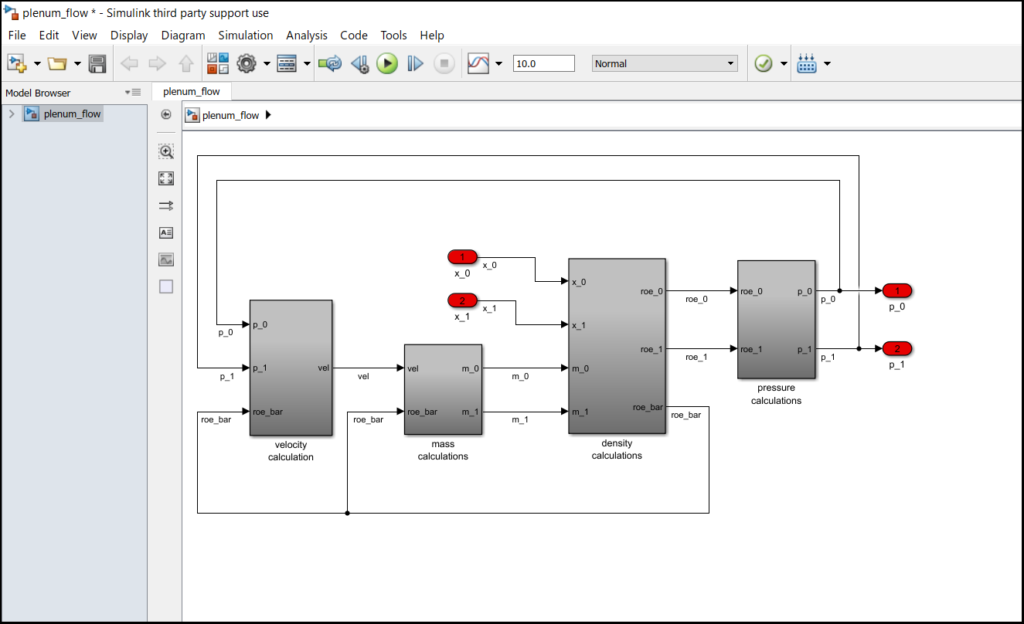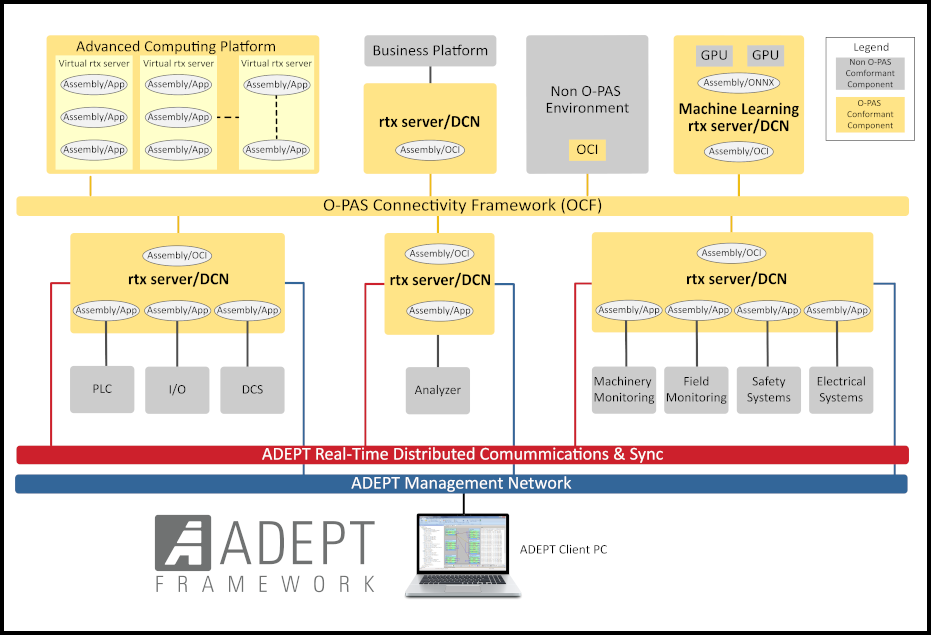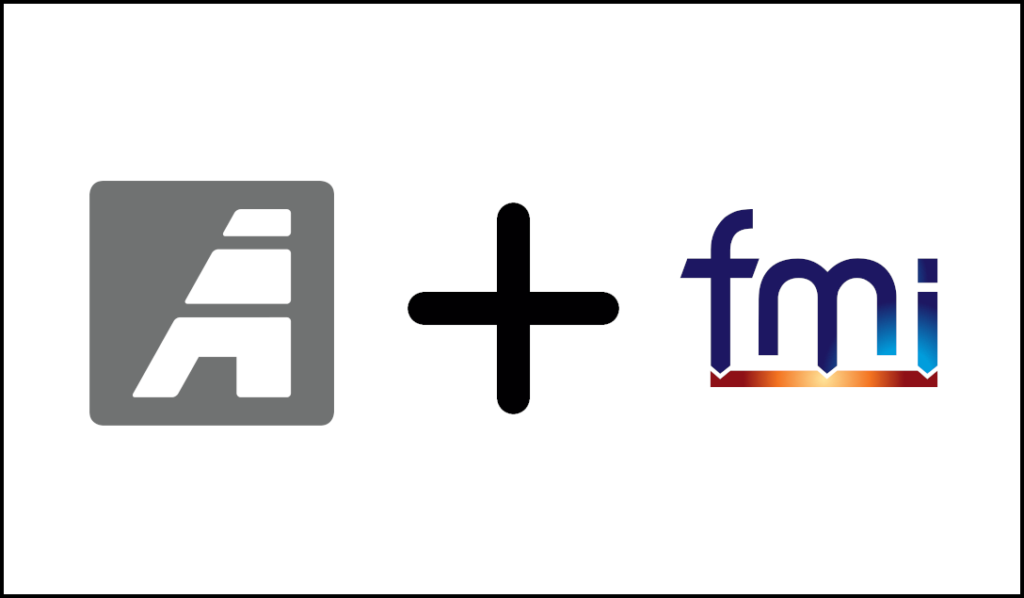The ADEPT Framework is comprised of four main client tools: ADEPT-DE, ADEPT-VI, ADEPT-GD and ADEPT-DB. The ADEPT Enterprise Server (ADEPT-ES) is a utility that enhances cybersecurity, teamwork, and usability across the entire ADEPT environment. ADEPT-ES provides a unifying architecture, allowing unparalleled integration of the ADEPT Framework into your process. The Enterprise Server adds LDAP user access control, Network Diary files, centralized configuration management, and workflow enhancements. Whether used throughout an entire lab with many clients and servers, or just on a single client/server application, ADEPT-ES adds features and capabilities to integrate with your existing processes and improve the efficiency and automation of your ADEPT deployments.
LDAP User Access Control
ADEPT-ES LDAP user access control works in conjunction with your existing LDAP server to harden cybersecurity and restrict access to various features of the ADEPT tools. Whenever ADEPT-ES is enabled and access to a tool/functionality is attempted, the user will be prompted with a login. The login will be validated against the list of users for that tool/functionality and access will be granted accordingly.
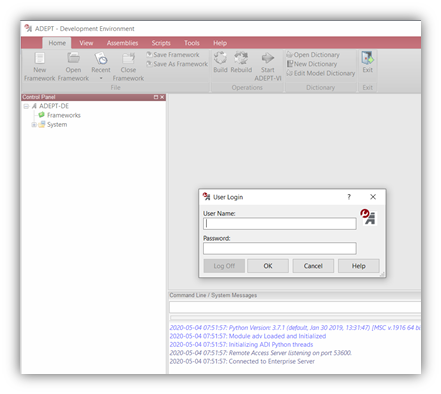
LDAP User Login
Controlling access to ADEPT features allows development and test facilities to limit risk to valuable IP and test assets by ensuring users have access to only the tools and functions they need and are qualified to operate. ADEPT-ES works with existing facility LDAP servers and credentials, eliminating the need to “keep track” of additional usernames and passwords. ADEPT-ES also provides a message log (audit log) to track key usage and attempted logins. Overall, the LDAP user access control capabilities of ADEPT-ES enable your team to harden the cybersecurity and protect your IP for all your ADEPT industrial data and control assets.
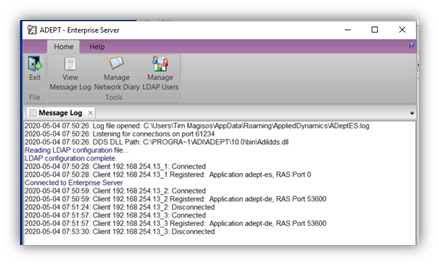
Message Log
Network Diary Files
The ADEPT-ES Network Diary makes it easy to document lab activities by providing a way to create and annotate a shared diary of events with notes/comments that are synchronized throughout the entire facility. Network Diary entries can be created from ADEPT-ES, ADEPT-GD, or ADEPT-VI using the Manage Network Diary user interface.
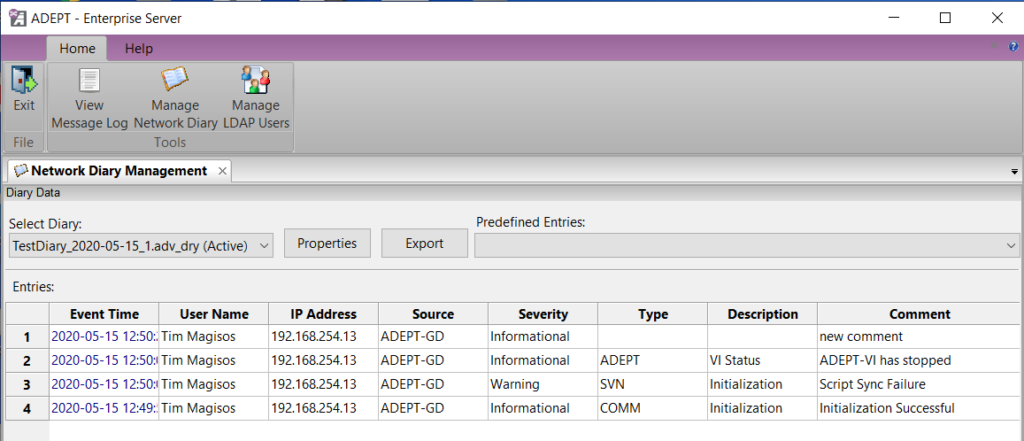
Manage Network Diary
To allow for quick entries, a list of predefined diary entries for known events and activities can be created when the diary is configured. During lab operations, diary entries can be made either from the predefined list or created manually from the user interface to allow time-synchronized capture of any lab event from any lab source.

Predefined or Manual Diary Entry
As with all ADEPT tools, network diary features are accessible through the ADEPT Python API. The Python API supports programmatic interfaces for diary management, such as configuring and starting a diary, and diary entries, such as adding entries from a predefined list, programmatic algorithm or user entry. This flexible interface allows diary entries to be embedded in automated test scripts or added using a command button in an ADEPT panel user interface.
Diary files can be exported to provide a document of lab activities using the Manage Network Diary user interface or programmatically from a Python script. Both XML and CSV export file formats are supported.
Centralized Configurations
The ADEPT Framework is an industrial data and control software platform built around the concept of a “data framework” that links real-time Linux servers as a distributed resource and provides desktop client control. The ADEPT Framework is used in the largest, most demanding industrial data and control applications. In these large applications the ADEPT Framework can be easily customized to fit the application, providing users with selections tailored to their industry and/or company nomenclature thereby limiting errors and increasing efficiency. This is accomplished by using server hardware configuration files (server files) and custom logical device template (custom template) files.
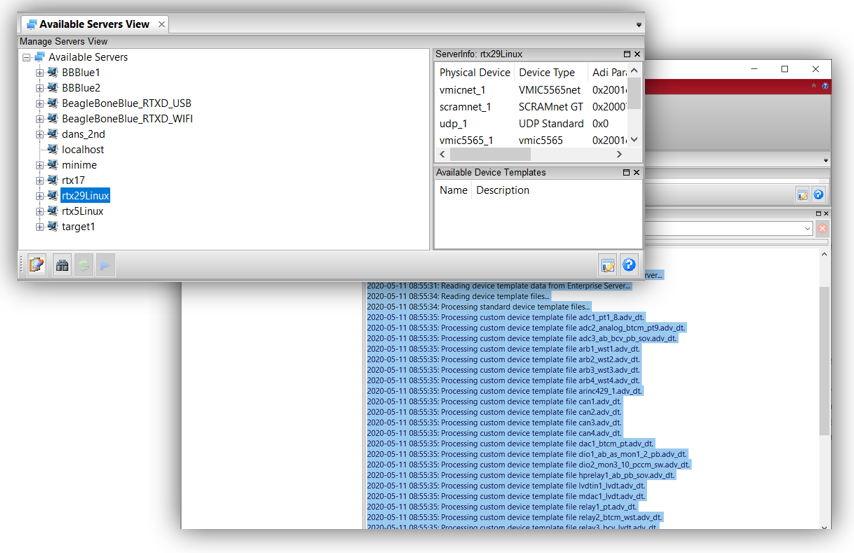
Custom Template and Server Files
Workflow Enhancements
The ADEPT Framework is comprised of four main client tools: ADEPT-DE, ADEPT-VI, ADEPT-GD and ADEPT-DB. ADEPT-ES is a utility that provides numerous enhancements to help streamline and integrate these tools into your workflow.
In general, there are two types of users of the ADEPT Framework: developers and testers. Developers design and develop the test facility that will be used by testers. Developers are generally expert users of the ADEPT tools and need access to all the ADEPT tools and features to create an easy to use environment and interface for the testers. In many cases, testers are casual users of the ADEPT Framework features, but daily users of the test environment. ADEPT-ES provides developers with tools to enhance the tester environment.
With ES, ADEPT tools can now send commands and data from one tool to another. An example of this capability is running Python scripts in ADEPT-VI that will start ADEPT-GD, connect to a data stream, and plot data on stripcharts. Another element of the ES workflow enhancements is the ability to create/run ADEPT panels in ADEPT-GD, combining the capability of ADEPT-VI with the power of analysis and graphical display of ADEPT-GD. These enhancements provide developers with the capability to build interfaces, like that shown below, combining capabilities from ADEPT VI and GD.
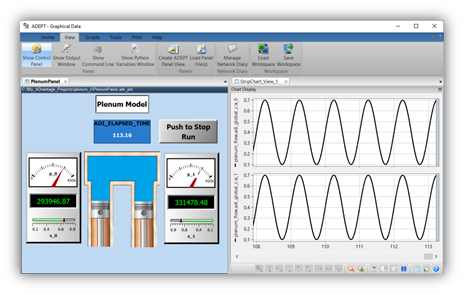
ADEPT Panel in ADEPT-GD
ADEPT-ES also provides enhancements to the TCP/IP API. This allows developers to easily integrate the ADEPT tools into an existing application, or process, bringing the power of ADEPT to your test facility while maintaining your existing investment.
Conclusion
ADEPT-ES is a service that provides additional features and functionality to the entire lab, including cybersecurity hardening using LDAP, synchronized lab activity logging with Network Diary, centralized control of lab configurations, and workflow enhancements.
How can the ADEPT Framework improve your workflow? Contact your local ADI representative today to see how the ADEPT Framework can boost the quality and efficiency of your cyber-physical product development activities.
